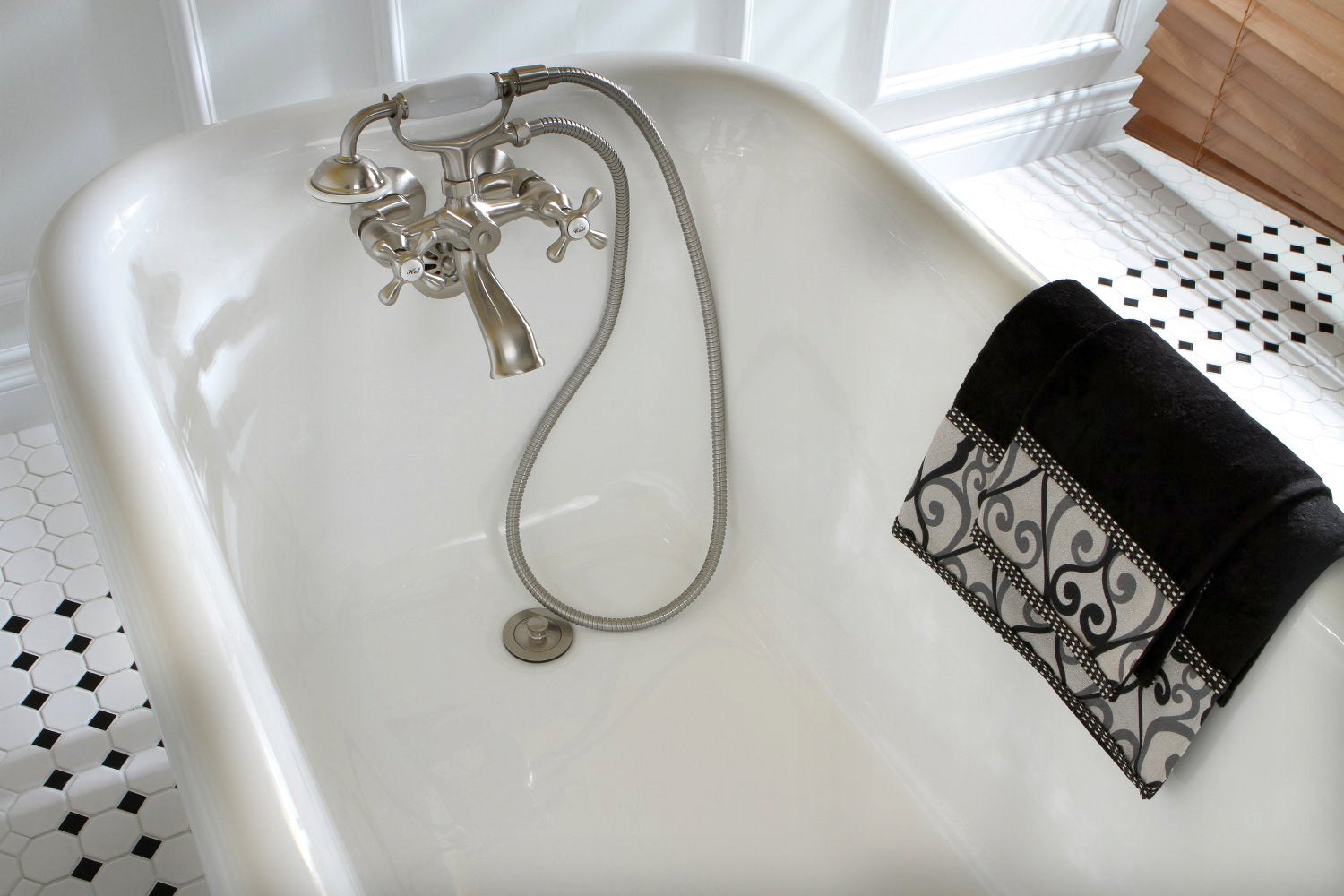
Different Types of Bathtub Drains
Twist. Turn. Tap. Pull. There are many different ways to drain a bathtub. While they all end with an empty tub, how they operate varies. Understanding the differences between different types of bathtub drains is helpful for homeowners planning to upgrade their drains or renovate their bathrooms.
In fact, the style of a bathtub drain is more than a cosmetic issue. The drain should fit with the style of the bathtub and plumbing in the room. It also should be easy for the user to operate and maintain. Therefore, it's worth taking a closer look at some of the key differences between different types of bathtub drains.
Trip Lever

The trip lever-style tub drain gets its name from the lever on the overflow plate. To open or close the drain, flip the lever up or down. A rod connects the lever to the drain stopper. This type of drain is affordable, but installing it typically requires a few more steps compared to other types of drains. Homeowners may also find that this drain is more likely to collect hair and debris and may need to be cleaned more frequently.
Lift and Turn

A lift and turn tub drain has a knob on top of the drain for the user to grab when they want to open or close the drain. It turns in one direction to close and the opposite direction to open. The durability and simplicity of the design make it an option for most bathtubs. It’s fairly easy to install, with a single screw that connects to the threaded centers of the drain crossbar.
Push Up/Toe Touch

A toe touch drain is similar to a lift and turn drain, but it has one key difference. The drain opens and closes with a push from someone’s toe. This easy-to-use drain works well in most bathtubs and is especially useful for people with mobility issues who don’t want to bend over to open and close the drain.
Chain and Plug
The chain and plug drain is a simple and surprisingly effective drain design. It features a pliable plug that slides into the drain to stop the flow of water. The chain connects the plug to the overflow plate, which offers two key advantages. It keeps the plug in the tub so it’s always nearby. It also makes it possible to remove the plug and drain the tub without placing one's hands in the water.
Tips for Choosing Tub Drains
For many people, choosing a tub drain is a matter of personal preference. They choose a drain that fits with the style of the bathroom or has a familiar look. Those who want to switch up their décor and try something new should spend some time figuring out what makes a specific drain style work (or not) with their tub. The following considerations can be helpful for this process.
Bathtub Style

Bathtub manufacturers typically include a list of recommended drains for their products. Although it is possible to choose a drain that’s not on this list, the list can be a good starting point for identifying the types of drains that work with the specific tub model.
Cost
The cost of a bathtub drain includes more than the price tag for the drain. In fact, many drains are fairly inexpensive compared to other parts of the tub and drain assembly. Installing and maintaining drains over time can increase their cost of ownership.
Some drains are easier to install than others, and homeowners who plan to do the work themselves may want to look for the type of drain that's easiest for them to install. In many cases, this includes drains that screw into a threaded pipe. For more complex drains, they may need to hire a professional for the installation.
Ease of Use
For some people, certain drain styles tend to be easier to use than others. For example, someone with limited mobility may prefer a plug and chain drain or a toe touch drain that they can open and close without bending over into the water. Similarly, a lift and turn drain may be difficult for someone with limited grip strength or small hands to operate.
Maintenance
Some drains are easier to maintain than others. For example, certain designs — like grid drains and lever drains — are more likely to collect hair and other debris. People who choose these types of drains should consider how much work it takes to clean the drain, especially if a section of the drain needs to be removed before cleaning.
Upgrade Your Bathtub With a New Tub Drain
The selection of tub drains at Kingston Brass includes toe-touch, plug and chain, lift and turn, and more. These drains come in a variety of finishes that instantly update the tub and pair well with other fixtures in the collection. Browse the inventory and discover how easy it is to transform the look and function of a bathtub.
